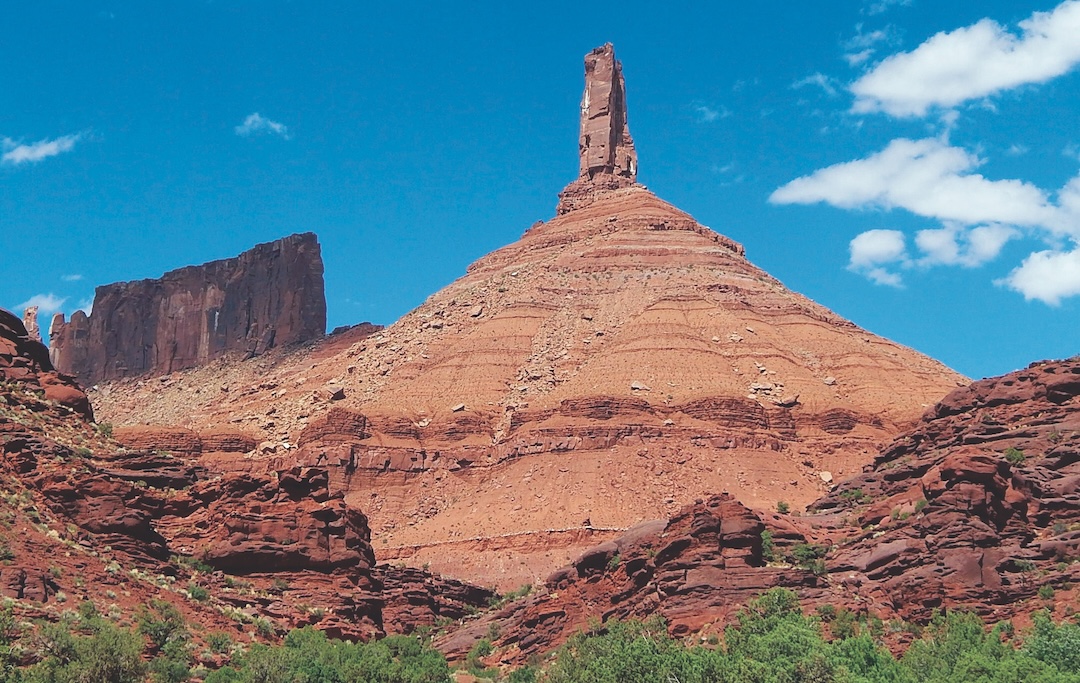Protection Pulled Out
Utah, Moab, Castleton Tower

On the morning of October 26, Grand County Search and Rescue received a call for help from a climber (mid-40s) who had sustained an open lower leg fracture. The climbing team was at the beginning of the second pitch of the Kor-Ingalls Route (4 pitches, 5.9+) on Castleton Tower. Both EMS and SAR responded with helicopter support to the area. Rescuers climbed up, administered care, and packaged the patient—who was hauled off the route, then flown to the hospital.
Rescuers learned that this team had planned to climb the North Chimney (5.9) that day but had found a long line of climbers in front of them. Instead of waiting, they pivoted to the Kor-Ingalls. The second pitch—referred to as “honest 5.8” on Mountain Project—has a 40-foot section of sustained and slippery fist-sized crack that for most climbers requires multiple number 4-sized Camalots for protection. This climbing team had only one number 4 cam but thought they might be okay using a number 3 instead. After climbing the first pitch without incident, the climber had started up the second. Finding the fist crack longer and harder than expected, he placed the number 3, clipped it, and grabbed it, hoping to downclimb to his number 4. The tipped-out number3 cam pulled out and he fell all the way to a ledge, breaking his leg.
ANALYSIS
Crowds are an unfortunate reality in climbing. This team of experienced climbers had knowledge of an alternate route but did not bring the proper equipment for both routes. When the climber realized that the difficulty exceeded his expectations, he did not have adequate protection below him. His partner was able to administer first aid and rescuers were able to access him in a timely manner, but it is always a good idea to be proficient at self-rescue in these remote areas. Finally, it’s a good idea to thoroughly research one’s intended route. (Source: Grand County Search and Rescue.)

